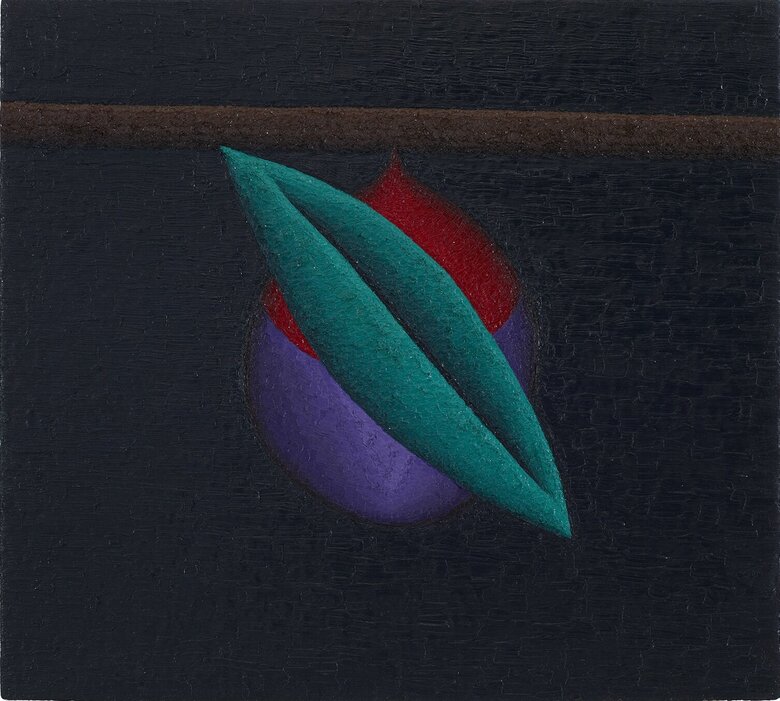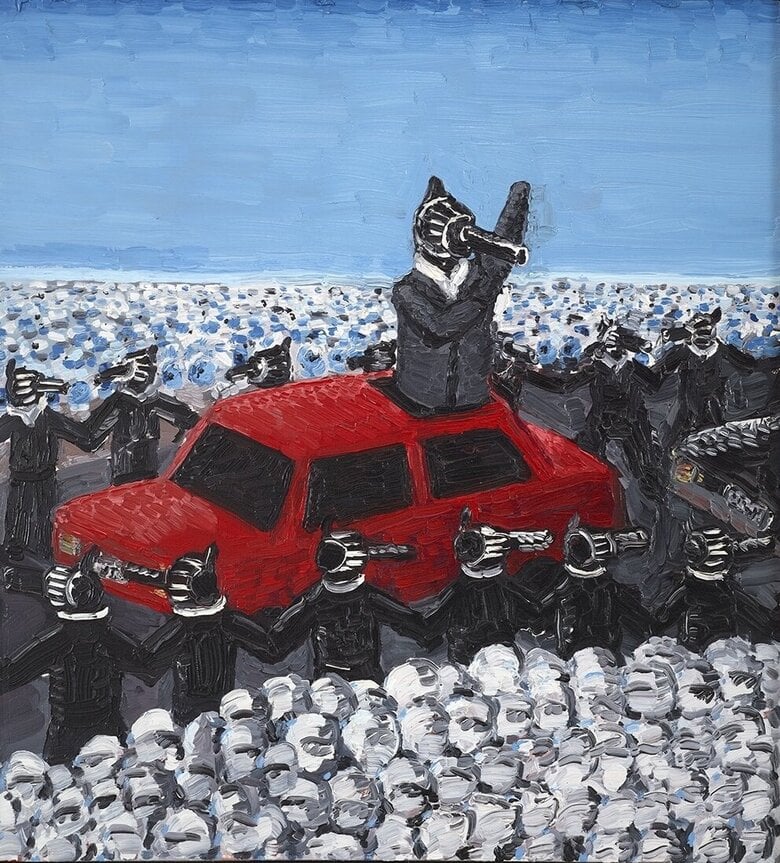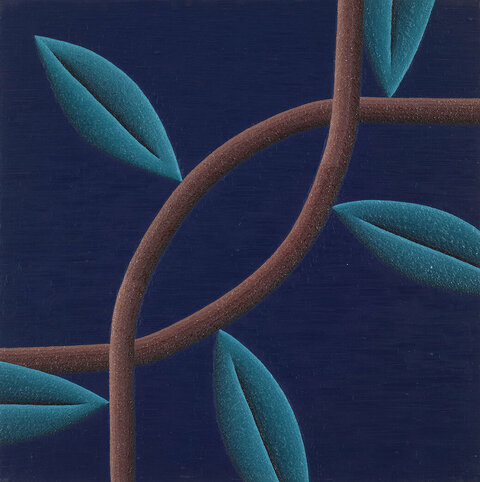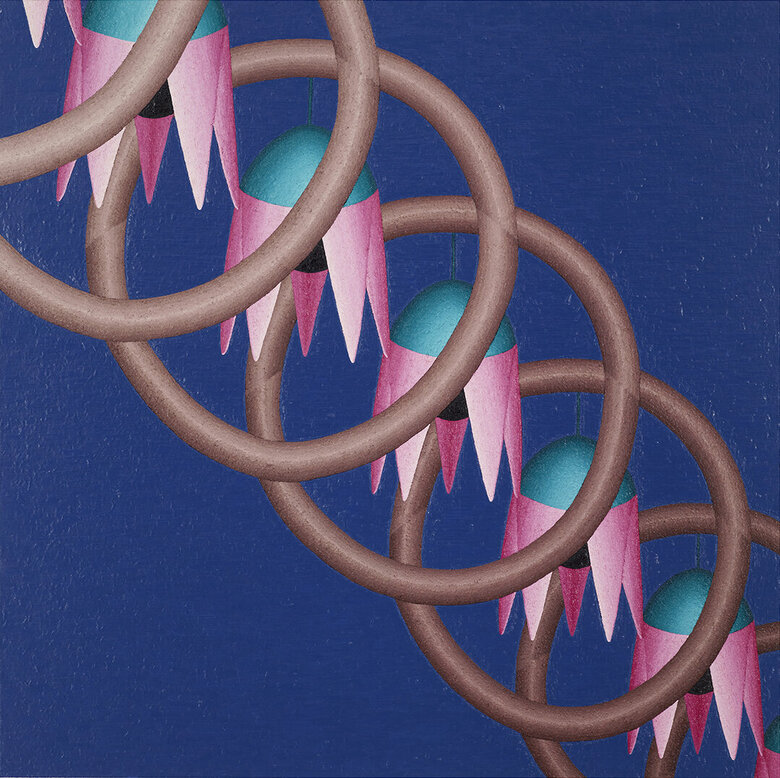Born in Tunis, Tunisia in 1981, Nadia Ayari is a contemporary painter and sculptor based in Brooklyn, New York. Her multidisciplinary abstract work spans painting, fresco, and sculpture, exploring...
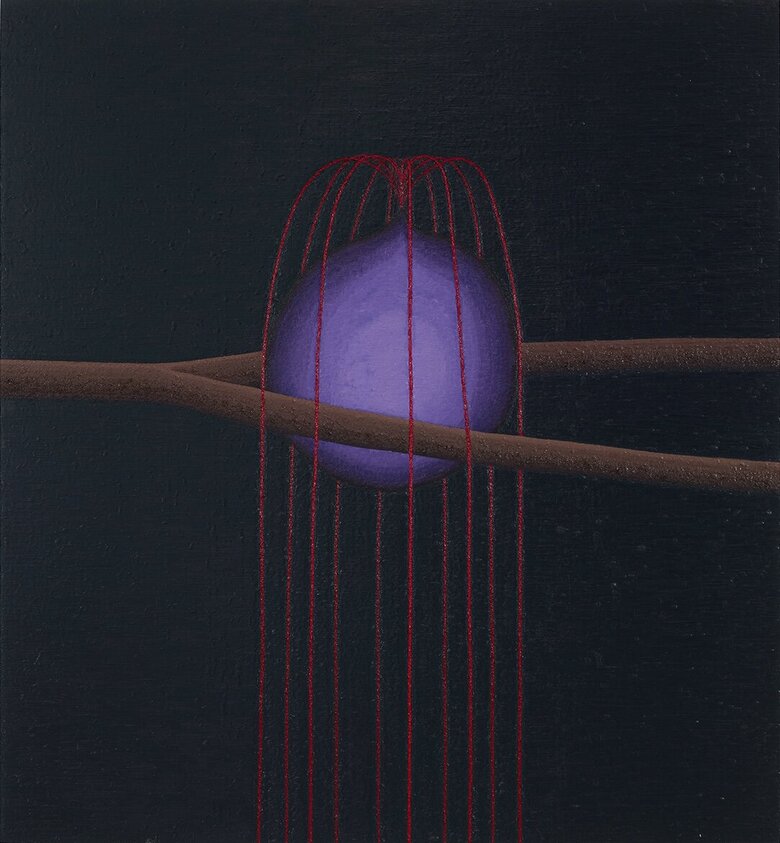


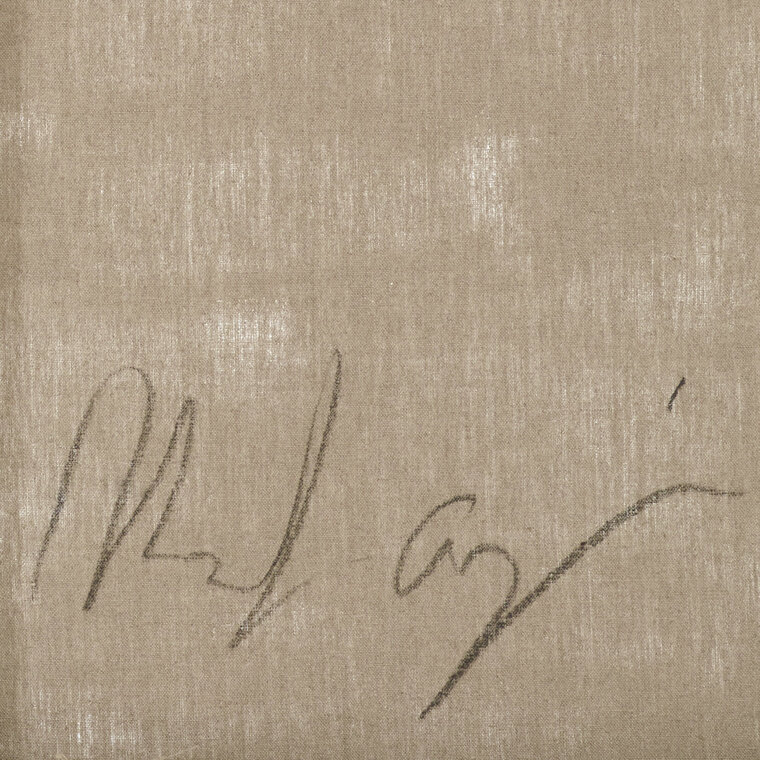

Born in Tunis, Tunisia in 1981, Nadia Ayari is a contemporary painter and sculptor based in Brooklyn, New York. Her multidisciplinary abstract work spans painting, fresco, and sculpture, exploring...
Born in Tunis, Tunisia in 1981, Nadia Ayari is a contemporary painter and sculptor based in Brooklyn, New York. Her multidisciplinary abstract work spans painting, fresco, and sculpture, exploring themes of imprisonment, survival, and identity. Raised between the desert island of Djerba and the capital Tunis, Ayari drew early inspiration from her bicultural household: her father, a politically engaged Tunisian farmer, shaped her worldview, while her American mother, a schoolteacher, nurtured her creative inclinations.
Ayari moved to the United States in 2000and in 2004 earned a bachelor’s degree in Art History at Boston University. She received a Certificate of Fine Arts (CFA) in Painting from Brandeis University in 2005, and a Masters in Fine Arts (MFA) in Painting from the Rhode Island School of Design in 2007. In 2006, she participated in a residency at the Skowhegan School of Painting and Sculpture in Maine, where she first explored fresco painting– a technique where pigments are painted onto wet plaster so the image becomes part of the wall as it dries. Fresco painting helped her cope with the emotional toll of the 2006 Lebanese-Israeli War, as the labor-intensive and time-consuming nature of the artform kept her focused and productive. In 2009, she completed a residency at the Fine Arts Work Center, and in 2014, she moved to Dubai for a residency at A.i.R Dubai.
While living in the United States, Ayari encountered artists whose emotionally and politically charged works deeply influenced her approach to identity, heritage, and personal narrative. She was inspired by painters such as Canadian-American artist Philip Guston and American painter Leon Golub, whose works she studied while at the Rhode Island School of Design. Guston was known for his raw, cartoonish forms and symbolic use of fleshy pink colors, and Golub for his large-scale, politically charged figurative paintings which confronted violence and power. Inspired by the works of these two artists, Ayari started exploring the convergence of personal experiences and political themes in her art .
During the early 2000s, Ayari reflected on aspects of religious observance, questioned the condition of women, denounced the state of imprisonment and shed light on the release of Palestinian prisoners from Israeli jails. Drawing on Guston’s “meaty” abstract compositions and pinkish palette, Ayari’s visual language at the time was shaped by fleshy tones and biomorphic figures. She particularly depicted tongues, eyes, and fingers – abstracted body parts that conveyed autonomy and tension – painted in raw flesh tones of pink, beige, brown, and often animated with attributes such as eyelashes or clothing. A key example from this period is Beirut, 2007, a painting that blends figuration with urban motifs. Cylindrical forms resembling fingers or veiled human figures stand in front of palm trees and architectural domes. Ayari painted the lower part of the cylindrical figures in pink, and the white upper part with a brown brushstroke in the middle. She also painted the palm trees with gestural interrupted brushstrokes adding dynamism to the picture, making the palm leaves seem like they were swaying.
Following the September 11, 2001 (9/11) attacks on New York City, Ayari developed post-traumatic emotional distress and experienced a form of identity crisis. She felt the need to explore her national and cultural identity. In the foreground of her 2007 painting Beirut, she depicted a group of elongated human figures that looked very much like cylindrical columns. The wall symbolizes a shield protecting a mosque painted in the background. The mosque serves as a symbol of the Islamic religion, adding a layer of intrigue and engagement to her work.
Around 2010, Ayari transitioned towards a new visual language that evolved into what can now be recognized as her signature style. Ayari’s artistic production shifted in terms of subject matter, formal depiction, and technique. Moving away from the cultural references that shaped her earlier work, she embraced a new mode of narration. As she transitioned into abstraction, Ayari shifted her focus from culturally specific motifs to broader reflections on the human condition. The canvas’ surface and composition became a space of experimentation, where she could study, produce, and repeatedly revisit the same subjects.
Abstracted visual elements drawn from nature like figs, leaves, and jasmine flowers became the protagonists of her paintings. The vegetal visual elements replaced former subjects. For instance, the tongue became the leaf, and the eye became the flower. In doing so, she broke away from Guston’s fleshy tones and established her own color palette, which now consists of intense nuances of ochre-yellow, orange, magenta, blue, purple, and green.
Her motifs come to life through multiple well-stretched layers of paint, each meticulously applied over the previous one. Ayari applied paint in hundreds of delicate brushstrokes layered on each other. They may appear flat and uniform from a distance, but when seen up close, they reveal a textured surface mimicking the silk thread weaving technique. This technique lent her subjects a rich physical presence, adding depth and tangibility to her work. The texture and density of the oil paint Ayari uses catches the light, creating an almost shimmering effect.An example of this effect can be seen in the oil on linen painting Orbs I, 2021, currently part of the Ramzi and Saeda Dalloul Art Foundation (DAF), in Beirut. Set against a uniform dark cobalt blue background, the artwork features diagonal chain of smooth, brown rings. Suspended from one of these rings is a stylized flower with sharply defined magenta petals, a black bulbous center, and a pale sea-green sepal.
For Ayari, the flower – an imagined creation inspired by the native flora of North Africa – addresses the theme of survival. In Orbs I, the floral motifs are symmetrical, formed with straight, clean lines and well-stretched paint that creates subtle color gradients, making the petals shine as if they had a hard surface hit by a soft light. In this way, the flowers are abstracted from the soft and organic characteristics the figure of the flower is often connected to, instead conveying a sense of stiffness and inalterability. The brown rings might suggest stems, but their glossy white highlights give them a plastic-like appearance. The pale separation lines across the rings hint at the form of joined bracelets, reinforcing the idea of ornament as both protection and constraint. Additionally, the flowers’ soft core seems to be shielded by this apparent hardness, suggesting a struggle for survival in unnatural and challenging conditions.
Ayari expanded her engagement with materiality by creating small-scale frescoes on bricks, marble blocks, and cast glass. An example is her Bricks project, 2016, which included brick sculptures alongside paintings. In these artworks, Ayari examines the fig as a central figure. The sculptures consist of bricks with a rectangular, thick layer of plaster, from which the image of the fig emerges. The fig emerges as a glossy purple sphere suspended from a horizontal bar. Through the smooth application of various shades of purple, grading from dark at the edges to nearly white at the center, the surface of the fig appears glossy and polished. Ayari’s fig is an abstraction of the fruit from its usual associations with ripeness, fullness and decay, instead symbolizing both impassability and fragility. Perfectly round and smooth, the fig floats in a homogenous black background, evoking the materiality of a delicate glass Christmas ornament. The lightness and fragility of the fig stand in stark contrast to the brick’s heavy, rough and strong nature. Bricks exemplifies how Ayari, by playing with different materiality and merging contrasting symbols, conveys the complexity of human existence.
Nadia Ayari's artistic journey is marked by an evolving exploration of identity, cultural heritage, and the human condition. From her early figurative works that explored personal and political intersections, to her later abstractions where natural elements like figs and flowers symbolically convey fragility and resilience, Ayari’s practice has continually pushed the boundaries of form, medium, and meaning. Her distinct visual language – rooted in both her cultural heritage and broader existential concerns – expresses a nuanced exploration of materiality and symbolism. Whether through oil paintings or frescoed bricks, Ayari's work embodies the complexities of existence, offering a space where abstraction meets reality, and vulnerability meets strength.
Born in Tunis, Tunisia in 1981, Nadia Ayari is a contemporary painter and sculptor based in Brooklyn, New York. Her multidisciplinary abstract work spans painting, fresco, and sculpture, exploring themes of imprisonment, survival, and identity. Raised between the desert island of Djerba and the capital Tunis, Ayari drew early inspiration from her bicultural household: her father, a politically engaged Tunisian farmer, shaped her worldview, while her American mother, a schoolteacher, nurtured her creative inclinations.
Ayari moved to the United States in 2000and in 2004 earned a bachelor’s degree in Art History at Boston University. She received a Certificate of Fine Arts (CFA) in Painting from Brandeis University in 2005, and a Masters in Fine Arts (MFA) in Painting from the Rhode Island School of Design in 2007. In 2006, she participated in a residency at the Skowhegan School of Painting and Sculpture in Maine, where she first explored fresco painting– a technique where pigments are painted onto wet plaster so the image becomes part of the wall as it dries. Fresco painting helped her cope with the emotional toll of the 2006 Lebanese-Israeli War, as the labor-intensive and time-consuming nature of the artform kept her focused and productive. In 2009, she completed a residency at the Fine Arts Work Center, and in 2014, she moved to Dubai for a residency at A.i.R Dubai.
While living in the United States, Ayari encountered artists whose emotionally and politically charged works deeply influenced her approach to identity, heritage, and personal narrative. She was inspired by painters such as Canadian-American artist Philip Guston and American painter Leon Golub, whose works she studied while at the Rhode Island School of Design. Guston was known for his raw, cartoonish forms and symbolic use of fleshy pink colors, and Golub for his large-scale, politically charged figurative paintings which confronted violence and power. Inspired by the works of these two artists, Ayari started exploring the convergence of personal experiences and political themes in her art .
During the early 2000s, Ayari reflected on aspects of religious observance, questioned the condition of women, denounced the state of imprisonment and shed light on the release of Palestinian prisoners from Israeli jails. Drawing on Guston’s “meaty” abstract compositions and pinkish palette, Ayari’s visual language at the time was shaped by fleshy tones and biomorphic figures. She particularly depicted tongues, eyes, and fingers – abstracted body parts that conveyed autonomy and tension – painted in raw flesh tones of pink, beige, brown, and often animated with attributes such as eyelashes or clothing. A key example from this period is Beirut, 2007, a painting that blends figuration with urban motifs. Cylindrical forms resembling fingers or veiled human figures stand in front of palm trees and architectural domes. Ayari painted the lower part of the cylindrical figures in pink, and the white upper part with a brown brushstroke in the middle. She also painted the palm trees with gestural interrupted brushstrokes adding dynamism to the picture, making the palm leaves seem like they were swaying.
Following the September 11, 2001 (9/11) attacks on New York City, Ayari developed post-traumatic emotional distress and experienced a form of identity crisis. She felt the need to explore her national and cultural identity. In the foreground of her 2007 painting Beirut, she depicted a group of elongated human figures that looked very much like cylindrical columns. The wall symbolizes a shield protecting a mosque painted in the background. The mosque serves as a symbol of the Islamic religion, adding a layer of intrigue and engagement to her work.
Around 2010, Ayari transitioned towards a new visual language that evolved into what can now be recognized as her signature style. Ayari’s artistic production shifted in terms of subject matter, formal depiction, and technique. Moving away from the cultural references that shaped her earlier work, she embraced a new mode of narration. As she transitioned into abstraction, Ayari shifted her focus from culturally specific motifs to broader reflections on the human condition. The canvas’ surface and composition became a space of experimentation, where she could study, produce, and repeatedly revisit the same subjects.
Abstracted visual elements drawn from nature like figs, leaves, and jasmine flowers became the protagonists of her paintings. The vegetal visual elements replaced former subjects. For instance, the tongue became the leaf, and the eye became the flower. In doing so, she broke away from Guston’s fleshy tones and established her own color palette, which now consists of intense nuances of ochre-yellow, orange, magenta, blue, purple, and green.
Her motifs come to life through multiple well-stretched layers of paint, each meticulously applied over the previous one. Ayari applied paint in hundreds of delicate brushstrokes layered on each other. They may appear flat and uniform from a distance, but when seen up close, they reveal a textured surface mimicking the silk thread weaving technique. This technique lent her subjects a rich physical presence, adding depth and tangibility to her work. The texture and density of the oil paint Ayari uses catches the light, creating an almost shimmering effect.An example of this effect can be seen in the oil on linen painting Orbs I, 2021, currently part of the Ramzi and Saeda Dalloul Art Foundation (DAF), in Beirut. Set against a uniform dark cobalt blue background, the artwork features diagonal chain of smooth, brown rings. Suspended from one of these rings is a stylized flower with sharply defined magenta petals, a black bulbous center, and a pale sea-green sepal.
For Ayari, the flower – an imagined creation inspired by the native flora of North Africa – addresses the theme of survival. In Orbs I, the floral motifs are symmetrical, formed with straight, clean lines and well-stretched paint that creates subtle color gradients, making the petals shine as if they had a hard surface hit by a soft light. In this way, the flowers are abstracted from the soft and organic characteristics the figure of the flower is often connected to, instead conveying a sense of stiffness and inalterability. The brown rings might suggest stems, but their glossy white highlights give them a plastic-like appearance. The pale separation lines across the rings hint at the form of joined bracelets, reinforcing the idea of ornament as both protection and constraint. Additionally, the flowers’ soft core seems to be shielded by this apparent hardness, suggesting a struggle for survival in unnatural and challenging conditions.
Ayari expanded her engagement with materiality by creating small-scale frescoes on bricks, marble blocks, and cast glass. An example is her Bricks project, 2016, which included brick sculptures alongside paintings. In these artworks, Ayari examines the fig as a central figure. The sculptures consist of bricks with a rectangular, thick layer of plaster, from which the image of the fig emerges. The fig emerges as a glossy purple sphere suspended from a horizontal bar. Through the smooth application of various shades of purple, grading from dark at the edges to nearly white at the center, the surface of the fig appears glossy and polished. Ayari’s fig is an abstraction of the fruit from its usual associations with ripeness, fullness and decay, instead symbolizing both impassability and fragility. Perfectly round and smooth, the fig floats in a homogenous black background, evoking the materiality of a delicate glass Christmas ornament. The lightness and fragility of the fig stand in stark contrast to the brick’s heavy, rough and strong nature. Bricks exemplifies how Ayari, by playing with different materiality and merging contrasting symbols, conveys the complexity of human existence.
Nadia Ayari's artistic journey is marked by an evolving exploration of identity, cultural heritage, and the human condition. From her early figurative works that explored personal and political intersections, to her later abstractions where natural elements like figs and flowers symbolically convey fragility and resilience, Ayari’s practice has continually pushed the boundaries of form, medium, and meaning. Her distinct visual language – rooted in both her cultural heritage and broader existential concerns – expresses a nuanced exploration of materiality and symbolism. Whether through oil paintings or frescoed bricks, Ayari's work embodies the complexities of existence, offering a space where abstraction meets reality, and vulnerability meets strength.
Notes
1 “Nadia Ayari,” Barjeel Art Foundation, accessed on September 10, 2024, https://www.barjeelartfoundation.org/artist/tunisia/nadia-ayari/
2 Daniel Feinberg, 2016, “Wet, death.” Nadiaayari, accessed September 10, 2024, https://www.nadiaayari.com/Wet-Death
3 “A Lovely Conversation with Nadia Ayari, Arte realizzata,” Arte Realizzata, accessed on September 13, 2024, https://www.arterealizzata.com/interviews/a-lovely-conversation-with-nadia-ayari
4 “Nadia Ayari,” Barjeel Art Foundation, accessed on September 10, 2024, https://www.barjeelartfoundation.org/artist/tunisia/nadia-ayari/
5 “CV,” Nadiaayari, accessed on September 9, 2024, https://www.nadiaayari.com/CV-3
6 “The Activity of Painting and Other Actions. Nadia Ayari in conversation with Haig Aivazian,” Ibraaz, accessed September 9, 2024, https://www.ibraaz.org/interviews/70
7 “Fresco,” Tate, accessed September 17, 2024, https://www.tate.org.uk/art/art-terms/f/fresco
8 “The Activity of Painting and Other Actions. Nadia Ayari in conversation with Haig Aivazian,” Ibraaz, accessed September 9, 2024, https://www.ibraaz.org/interviews/70
9 “CV,” Nadiaayari, accessed on September 9, 2024, https://www.nadiaayari.com/CV-3
10 “Nadia Ayari,” Saatchi gallery, accessed on September 12, 2024, https://www.saatchigallery.com/artist/nadia_ayari
11 “Nadia Ayari,” Artsy, accessed on September 10, 2024, https://www.artsy.net/artist/nadia-ayari
12 “Nadia Ayari,” Saatchi gallery, accessed on September 12, 2024, https://www.saatchigallery.com/artist/nadia_ayari
13 Nadia Ayari (@nadianejma), The Studio, 1969, by Philip Guston, Instagram, September 9, 2021, https://www.instagram.com/p/CTm54voluQM/?hl=da
14 “Nadia Ayari,” Saatchi gallery, accessed on September 12, 2024, https://www.saatchigallery.com/artist/nadia_ayari
15 “Beirut,” Barjeel Art Foundation, accessed September 10, https://www.barjeelartfoundation.org/collection/beirut-nadia-ayari/
16 Nadia Ayari, email to author, September 12, 2024
17 “Selfies in the bathroom: artist Nadia Ayari. Spotlights trends,” Alarabiya, accessed September, 2024, https://english.alarabiya.net/life-style/art-and-culture/2014/03/19/Selfies-in-the-bathroom-artist-Nadia-Ayari-spotlights-trends
18 Nadia Ayari (@nadianejma), “TALKING WITH - Nadia Ayari, about Philip Guston and his influence on her work,” Instagram, September 17, 2023, https://www.instagram.com/p/CxTHXzvo90P/?hl=da
18 “Glitches, Amplifications,” Cadet Capela, accessed September 16, 2024, https://cadetcapela.com/exhibitions/glitches-amplifications
20“Wave at 89 Greene,” Signs and symbols, accessed September 16, 2024, https://www.signsandsymbols.art/89-greene/wave
21 “Glitches, Amplifications,” Cadet Capela, accessed September 16, 2024, https://cadetcapela.com/exhibitions/glitches-amplifications
22 Nadia Ayari (@nadianejma), “bricks,” Instagram, February 6, 2016, https://www.instagram.com/p/BBbE_a7IiCg/?hl=da, March 12, 2016, https://www.instagram.com/p/BC1ZaguoiKz/?hl=da
Sources
Alarabiya. “Selfies in the bathroom: artist Nadia Ayari. Spotlights trends.”Accessed September, 2024. https://english.alarabiya.net/life-style/art-and-culture/2014/03/19/Selfies-in-the-bathroom-artist-Nadia-Ayari-spotlights-trends
Arte Realizzata, “A Lovely Conversation with Nadia Ayari, Arte realizzata.” Accessed on September 13, 2024, https://www.arterealizzata.com/interviews/a-lovely-conversation-with-nadia-ayari
Artsy. “Nadia Ayari.” Accessed on September 10, 2024. https://www.artsy.net/artist/nadia-ayari
Barjeel Art Foundation, “Beirut.” Accessed September 10. https://www.barjeelartfoundation.org/collection/beirut-nadia-ayari/
Barjeel Art Foundation, “Nadia Ayari.” Accessed on September 10, 2024. https://www.barjeelartfoundation.org/artist/tunisia/nadia-ayari/
Cadet Capela. “Glitches, Amplifications.” Accessed September 16, 2024, https://cadetcapela.com/exhibitions/glitches-amplifications
Feinberg, Daniel. 2016. “Wet, death.” Nadiaayari. Accessed September 10, 2024. https://www.nadiaayari.com/Wet-Death
Ibraaz. “The Activity of Painting and Other Actions. Nadia Ayari in conversation with Haig Aivazian.” Accessed September 9, 2024. https://www.ibraaz.org/interviews/70
Nadia Ayari (@nadianejma). “bricks.” Instagram, February 6, 2016. https://www.instagram.com/p/BBbE_a7IiCg/?hl=da, March 12, 2016, https://www.instagram.com/p/BC1ZaguoiKz/?hl=da
Nadiaayari. “CV.” Accessed on September 9, 2024. https://www.nadiaayari.com/CV-3
Nadia Ayari (@nadianejma). “TALKING WITH - Nadia Ayari, about Philip Guston and his influence on her work.” Instagram. September 17, 2023, https://www.instagram.com/p/CxTHXzvo90P/?hl=da
Nadia Ayari (@nadianejma). The Studio, 1969, by Philip Guston. Instagram. September 9, 2021. https://www.instagram.com/p/CTm54voluQM/?hl=da
Saatchi gallery. “Nadia Ayari.” Accessed on September 12, 2024. https://www.saatchigallery.com/artist/nadia_ayari
Signs and symbols. “Wave at 89 Greene.” Accessed September 16, 2024. https://www.signsandsymbols.art/89-greene/wave
Tate. “Fresco.” Accessed September 17, 2024. https://www.tate.org.uk/art/art-terms/f/fresco
Selected Solo Exhibitions
ONLINE: Nadia Ayari: Artwork of the Month, Taymour Grahne Projects, London, UK
Nadia Ayari: Focus On, Galerie Kandlhofer, Vienna, Austria
Nadia Ayari: About Surrender, Double Q Gallery, Hong Kong, Hong Kong
Tell it to me again, Lisa Kandlhofer, Vienna, Austria
Nadia Ayari: Glitches, Amplifications, Galerie Julien Cadet, Paris, France
Nadia Ayari: Eyelash in the Unknown, Nina Johnson, Florida, USA
Wave, 89 Greene at Signs and Symbols, New York City, New York, United States of America
Nadia Ayari: We Saw Stars, Taymour Grahne Projects, Notting Hill, London, UK
Nadia Ayari: 8 Ways Of Holding On, Taymour Grahne New York, New York, USA
Nadia Ayari: 8 Ways of Holding On, Taymour Grahne Projects, Holland Park, London, UK
Nadia Ayari: Bricks, Taymour Grahne New York, New York, USA
The Fountain and the Fig, The Third Line, Dubai, United Arab Emirates
This Place, Monya Rowe Gallery, New York City, New York, United States of America
Nadia Ayari, Luce Gallery, Turin, Italy
Selected Group Exhibitions
States of Becoming, Knoxville Museum of Art, Tennessee, USA
States of Becoming, McMullen Museum of Art, Boston College Art, Massachusetts, USA
Hudood: Rethinking boundaries, The Brunei Gallery, SOAS, London, UK
Sometimes It Snows In April, Louise Alexander Gallery / AFP, Los Angeles, California, USA
States of Becoming, Des Moines Art Center, Des Moines, Iowa, US
Spectre Visible, Christie’s, Paris, France
Fresh Nature, Kutlesa, Goldau, Switzerland
One Wall a Web Through Which the Moment Walks, 1/9 unosunove, Rome, Italy
States of Becoming, Independent Curators International, Center for Art Design and Visual Culture, Baltimore, Maryland, United States of America
Kawkaba: Highlights from the Barjeel Art Collection, Christie’s, London, United Kingdom
Immersed, Jack Siebert Projects, Los Angeles, California, United States of America
Contemporary Curated: Landscape Curated by Taymour Grahne, WOAW Gallery, Central, Hong Kong, Hong Kong
Intimacy, Taymour Grahne Projects, Holland Park, London, UK
States of Becoming, Independent Curators International, The Africa Center, New York City, New York, United States of America
1:54 Contemporary African Art Fair, Taymour Grahne Projects, London, United Kingdom
Landscape, Woaw Gallery, Hong Kong
Density’s Glitch, Fine Arts Work Center, Provincetown, Massachusetts, United States of America
The Entelechians, Eric Ruschman, Chicago, Illinois, United States of America
Art, a serious game, MACAAL, Museum of African Contemporary Art Al Maaden, Marrakech, Morocco
Greater New York 2021, MoMA PS1, Long Island City, New York, USA
Ridiculous Sublime, SFA Advisory, New York, USA
Trove, Artsy, Edition, Miami, Florida, United States of America
ONLINE: El que busca, encuentra…y sigue encontrando, White Columns, Greenwich Village, New York, USA
Exquisite Corpse, Conduit Gallery, Design District, Texas, USA
El que busca, encuentra...y sigue encontrando, White Columns, New York, City New York, United States of America, (online
Cinnamon, Produce Model, Chicago, Illinois, USA
Immigrancy, Samson Projects, South End, Boston, USA
Volley, Henry Street Settlement / Abrons Arts Center, New York, USA
Group Exhibition, Erin Cluley Gallery, Dallas, Texas, USA
Through Thick And Thin: Image Painting Today, Erin Cluley Gallery, Texas, US
Between Two Rounds of Fire, the Exile of the Sea, American University Museum, Washington, D.C., United States of America
A Verdant Summer, Taymour Grahne New York, New York, USA
Me, My, Mine: Commanding Subjectivity in Painting, DC Moore Gallery, Chelsea, New York, USA
Walls and Margins, Maraya Art Centre, Sharjah, United Arab Emirates
EXPO Chicago, Taymour Grahne Gallery, Chicago, Illinois, United States of America
Seducers, Greenpoint Terminal Gallery, Brooklyn, New York, United States of America
Art Dubai Projects, Dubai, United Arab Emirates
Hudson Guild, New York City, New York, United States of America
Exhibition: 1,2,3, b4, MOMus Modern, Thessaloniki, Greece
Diamonds, Diamonds, Nina Johnson, Florida, USA
Domino, Biennale: 3, Thessaloniki Biennale of Contemporary Art, Thessaloniki, Greece
United States Pavilion, 12th International Cairo Biennale, Cairo, Egypt
Mutual Migration, Michael Rosenthal Gallery, San Francisco, California, United States of America
Unveiled: New Art from the Middle East, Saatchi Gallery, London, United Kingdom
On Paper, Galleria Monica De Cardenas, Zuoz, Switzerland
May December, Memorial Hall Gallery, Providence, Rhode Island
Awards
Lotos Foundation Prize, Lotos Foundation, New York City, New York, United States of America
Robert Motherwell Award, Fine Arts Work Center, Provincetown, Massachusetts, United States of America
Matching Scholarship, Skowhegan School of Painting and Sculpture, Madison, Wisconsin, United States of America
Collections
Collection Pinault, Paris, France
Dalloul Art Foundation, Beirut, Lebanon
The X Museum, Beijing, China
The Scantland Collection, Columbus, Ohio
Fundación Medianoche, Grenada, Spain
Museum of African Contemporary Art Al Maaden, Marrakesh, Morocco
Barjeel Foundation, Sharjah, United Arab Emirates
State Museum of Contemporary Art, Thessaloniki, Greece
Saatchi Collection, London, United Kingdom
Join us in our endless discovery of modern and contemporary Arab art
Get updates from DAF
Follow Artists
Save your favourite Artworks
Share your perspectives on Artworks
Be part of our community
It's Free!
We value your privacy
TermsCookiesPrivacy Policies
Get updates from DAF
Follow Artists
Save your favourite Artworks
Share your perspectives on Artworks
Be part of our community
It's Free!
We value your privacy
TermsCookiesPrivacy Policies
Get updates from DAF
Follow Artists
Save your favourite Artworks
Share your perspectives on Artworks
Be part of our community
It's Free!
We value your privacy
TermsCookiesPrivacy Policies
If you have entered your email to become a member of the Dalloul Art Foundation, please click the button below to confirm your email and agree to our Terms, Cookie & Privacy policies.
We value your privacy, see how
Get updates from DAF
Follow Artists
Save your favourite Artworks
Share your perspectives on Artworks
Be part of our community
It's Free!
We value your privacy
TermsCookiesPrivacy Policies
